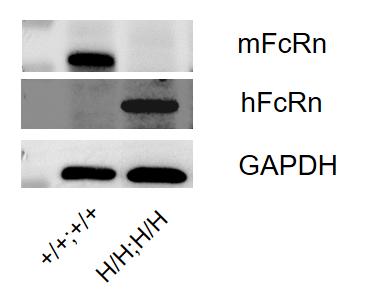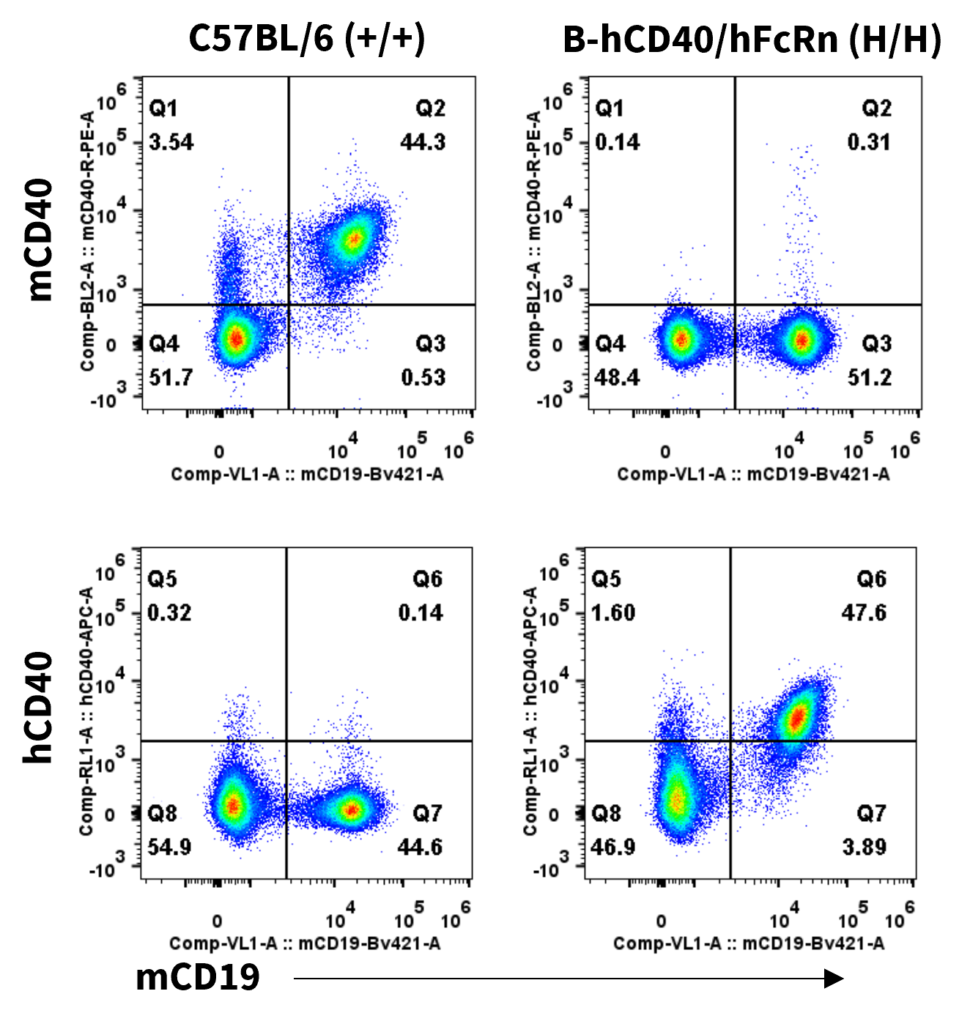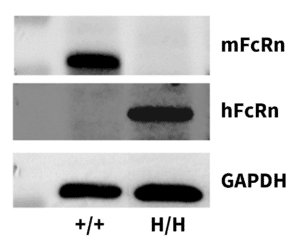Basic Information
-
Gene targeting strategy

-
Gene targeting strategy for B-hCD40/hFcRn mice. Exons 2-7 of mouse Cd40 gene that encode the extracellular sequence were replaced by human CD40 exons 2-7 in B-hCD40/hFcRn mice. The human full-length FCGRT cDNA sequence was inserted in the Fcgrt exons 2-4 in B-hCD40/hFcRn mice.
-
mRNA expression analysis

-

Strain specific analysis of FcRn expression in homozygous B-hCD40/hFcRn mice by western blot. Liver was collected from C57BL/6 mice (+/+;+/+) and homozygous B-hCD40/hFcRn mice (H/H;H/H) and analyzed by western blot with species-specific anti-FcRn antibody. Mouse FcRn was detectable in wild-type mice. Human FcRn was detectable only in homozygous B-hCD40/hFcRn mice but not in wild-type mice.
-
Protein expression analysis

-

Species-specific CD40 protein expression analysis in wild-type and humanized B-hCD40/hFcRn mice. Splenocytes were isolated from wild-type C57BL/6 (+/+) and homozygous B-hCD40/hFcRn (H/H) mice and analyzed by flow cytometry using species-specific anti-CD40 antibodies. Murine CD40 protein was detected in wild-type mice, while human CD40 protein was detected in B-hCD40/hFcRn mice.

Species-specific FcRn protein expression analysis in wild-type and humanized B-hCD40/hFcRn mice. Liver tissue was isolated from wild-type C57BL/6 (+/+) and homozygous B-hCD40/hFcRn (H/H) mice and analyzed by western blot using species-specific anti-FcRn antibodies. Murine FcRn protein was detected in wild-type mice, while human FcRn protein was detected in B-hCD40/hFcRn mice.


